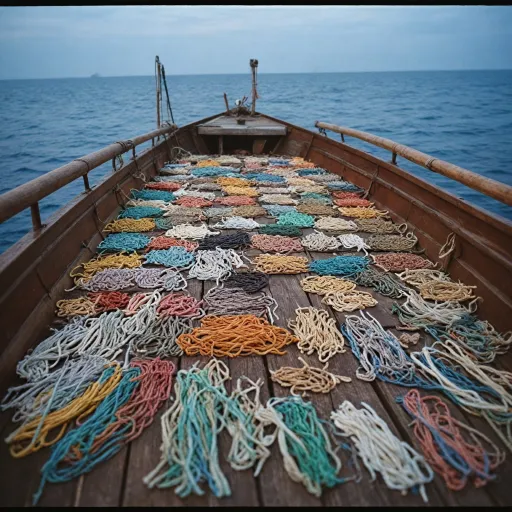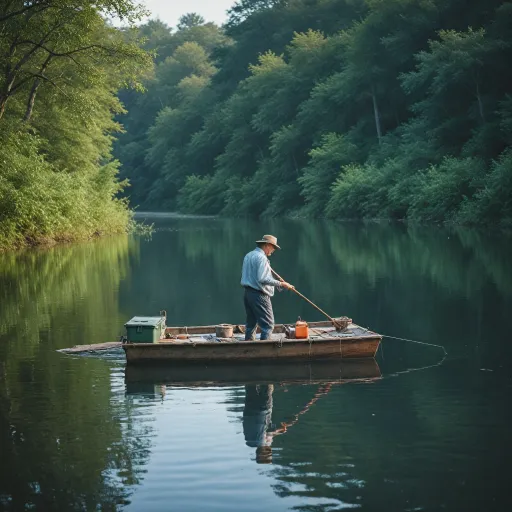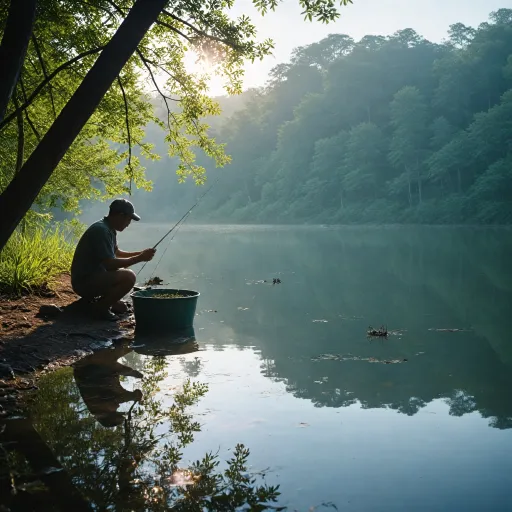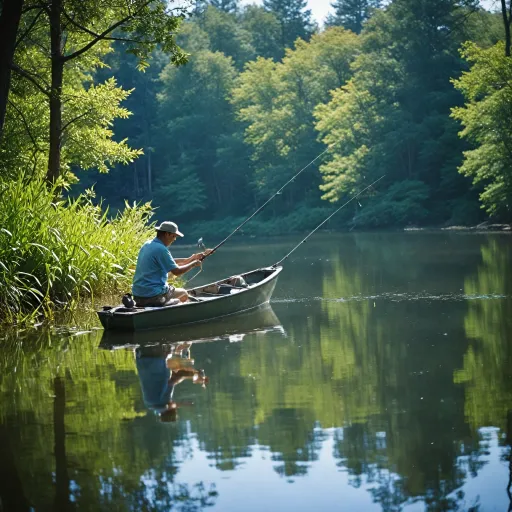
The Basics of Monofilament Fishing Lines
The Fundamentals of Nylon Monofilament
When exploring the world of recreational fishing, it's crucial to understand the materials used in your fishing tackle. One of the most popular choices among anglers is the nylon monofilament fishing line. This type of line is made from a single strand of nylon, and its simplicity and effectiveness make it a staple option for many. Monofilament lines are available in various colors such as clear, pink, blue, and green, allowing anglers to select the best hue for light tackle fishing environments or big game hunts.
Monofilament lines are loved for their stretch strength, which offers some forgiveness if a fish makes a sudden run. This quality also helps to keep the line from snapping and absorbs shocks better than other types of fishing lines. Additionally, monofilament is easily managed and casts well on regular fishing reels.
When you're out shopping for monofilament, it's essential to consider the price and yard options that suit your fishing needs. Many dealers offer various selling formats on platforms like Shopify where you can compare prices from low, high to price high price low, or even sale price options. Understanding the price structure, whether it's listed by regular price or unit price, will help you to budget accordingly.
There are numerous dealers resources to explore when sourcing the right monofilament line for your fishing exploits. Whether you're seeking high-quality materials for a sale or aiming to improve management techniques, monofilament offers a versatile option for every angler's box. Be sure to consider how monofilament lines compare to other types of lines when making your decision.
Advantages of Using Monofilament
Why Anglers Favor This Classic Choice
Monofilament fishing lines have long held the spotlight in recreational fishing tackle from their versatility to cost-effectiveness. Designed from a single strand of nylon, this option presents numerous advantages making it a favored choice for both seasoned anglers and beginners. Let's delve into the reasons why monofilament continues to be a staple in fishing pursuits.- Affordability: Monofilament fishing lines are often more budget-friendly than their counterparts. They are widely available at a range of price points, from high to low, making it easier for fishermen to find options that suit their budget. Whether you're comparing prices under "price high" or "price low", monofilament remains a practical option for regular use or for those on sale, it comes as a clear winner.
- Visibility Options: With various color options like clear, blue, pink, and green, monofilament allows anglers to shop for lines that suit their needs. For instance, a clear line may be preferred in clear water conditions, whereas blue or green might be ideal for blending into different fishing environments, providing an edge during a catch-and-release session.
- Stretch and Strength: One of the standout features is its stretchability. This inherent "stretch strength" acts as a shock absorber when a fish pulls hard, reducing the likelihood of line breakage, especially crucial when dealing with big game catches.
- Ease of Use: Handling and knot management become simpler with monofilament. It's known for being easy to tie knots with, which stays secure under pressure. This appeals to both novice anglers and experienced ones who need a reliable, hassle-free line that can quickly adapt to various fishing scenarios.
- Weight and Buoyancy: Monofilament lines are generally lightweight, aiding in light tackle and are buoyant, which can be advantageous in certain fishing techniques where floating lines are preferred.
Challenges and Limitations
Addressing the Drawbacks and Constraints
Though monofilament fishing lines have numerous benefits, they are not without their challenges and limitations which are worth considering. Experienced anglers may find that monofilament fishing lines, which are often favored for their affordability and versatility, pose specific constraints that should be accounted for when planning a fishing trip. One of the primary concerns is its stretch strength. While the elasticity of monofilament is advantageous in certain situations, it can also be a double-edged sword. The stretch can result in reduced sensitivity, making it difficult to detect subtle bites, particularly when fishing light tackle. This can be particularly challenging during big game fishing where precision is key. In terms of durability, monofilament isn’t as abrasion-resistant compared to other options like fluorocarbon or braided lines. This means that when fishing in rough or rocky environments, the line may suffer from more wear and tear, potentially leading to increased line breaks. The monofilament’s buoyancy can also affect its performance, especially if you are opting for deepwater fishing. Its higher visibility in clear water settings, unless opting for less conspicuous colors such as green or blue, may deter fish being targeted. Price considerations also play a significant role for anglers. Although monofilament is often available at a regular price point that is considered economical in comparison to other alternatives, such as nylon monofilament variants from different brands, there are differences in options that can affect your budget. When shopping, compare the options green or pink, unit price, shipping, regular price, and look for sales. Many shopify dealers resources might offer a varied selection, allowing you to decide on a balance between budget and quality. For more insights on alternative fishing lines and their comparison, you might want to explore the role of crickets in recreational fishing to understand how baits interact with different lines. These nuances often influence the decision-making process, guiding which line becomes the featured option in your tackle box.Choosing the Right Monofilament Line
Finding the Perfect Monofilament for Your Needs
Choosing the right monofilament line is a crucial step in enhancing your fishing experience, and there are several factors to consider. When you're shopping for monofilament, the wide range of options available can be overwhelming, but understanding what each option offers will help you make an informed decision that suits your fishing style.
- Lbs-Test Strength: This determines the line's resistance to breaking under pressure, often referred to as stretch strength. A high-test strength is suitable for big game fishing, while a lower test may be preferred for lighter tackle.
- Color Options: Monofilament lines come in various colors, such as clear, blue, green, and even pink. Each color serves a different purpose; for instance, opt for a clear line for stealthy presentations or a high-visibility option like neon green for easy line management.
- Yard Length: Consider the yard length you need. Most fishing tackle dealers offer spools in varying lengths, which impacts the unit price and overall cost.
- Price and Budget: Compare pricing from various shops, whether you’re buying from Shopify dealers or local retailers. Look for sale price opportunities to get the best deal without compromising on quality. It's essential to weigh the regular price against sale offers to find a cost-effective option within your budget.
Additionally, consider the type of fishing you do regularly. If you're angling in diverse conditions, having different types of monofilament lines, each suited to specific environments, will prove beneficial. Keep in mind that while price is an important factor, so is performance. Finding a balance between the two is key to ensuring you have a reliable line that enhances your fishing endeavors.
Maintenance and Care Tips
Extending Line Longevity and Performance
To ensure that your monofilament fishing line maintains its strength and effectiveness, proper maintenance and care are crucial. As an avid angler, you'll appreciate the value of preserving your gear for longevity and peak performance, especially when it comes to your choice between colors like clear, green, or pink monofilament options.
- Regular Inspection: Frequently check your line for any signs of wear, such as nicks, abrasions, or discoloration, which can affect its stretch strength and knot integrity.
- Proper Storage: Store your nylon monofilament line in a cool, dry place away from direct sunlight to prevent weakening of the fibers. Utilizing a fishing tackle box with compartments for your line ensures that it stays tangle-free and organized.
- Spooling Techniques: When respooling, ensure consistent tension to avoid high-low spots that can lead to tangles or breaks during use.
- Knot Maintenance: Practice tying strong knots, and trim excess leader material to reduce the risk of snags, keeping your line smooth and ready for a big game challenge.
- Yard Management: Keep track of the yard marked on spools, noting when it’s time to replace, especially if your line sees frequent use over varied conditions.
These steps not only help in maintaining the regular performance of your monofilament fishing line but also contribute to managing cost, since you can save on the need for frequent replacements at shops and online retailers like Shopify. Consider all price options and sales—from regular price deals to sale price offerings—when deciding on your next purchase to replenish your tackle.
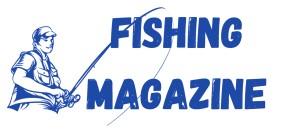
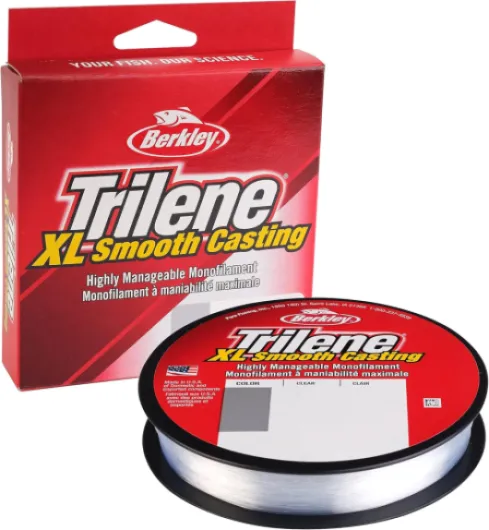

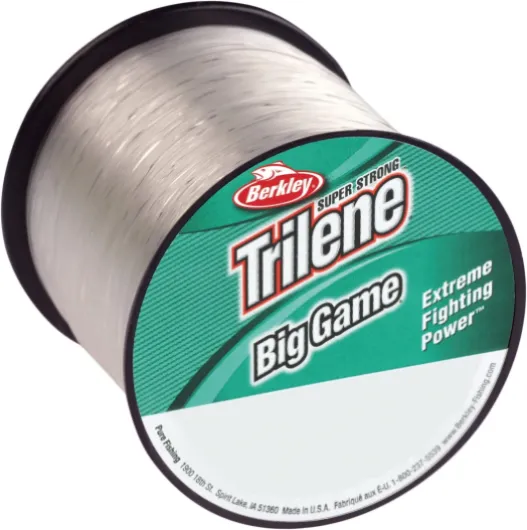
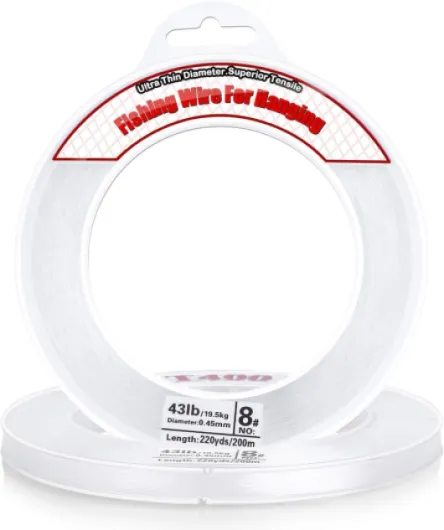
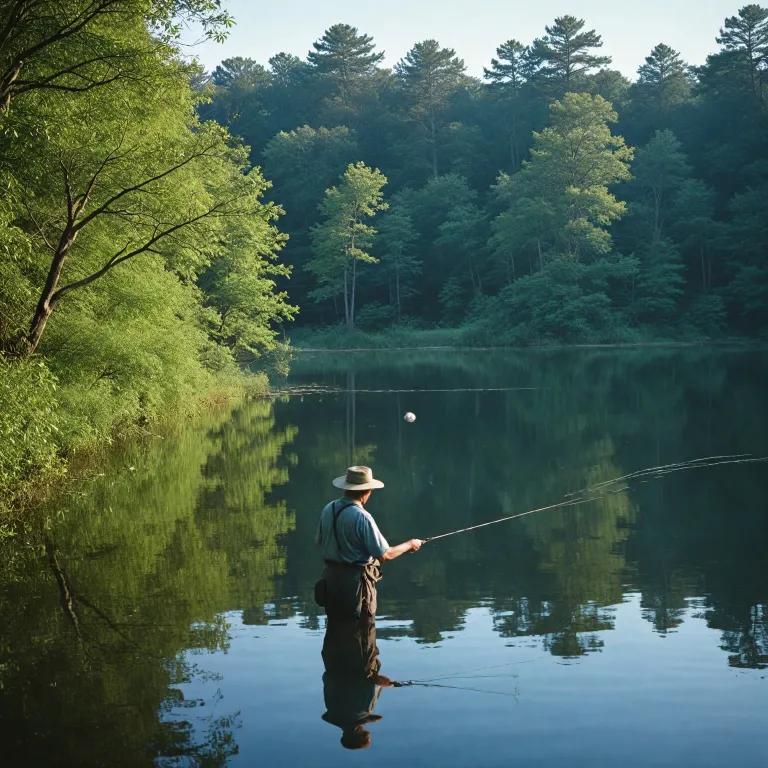
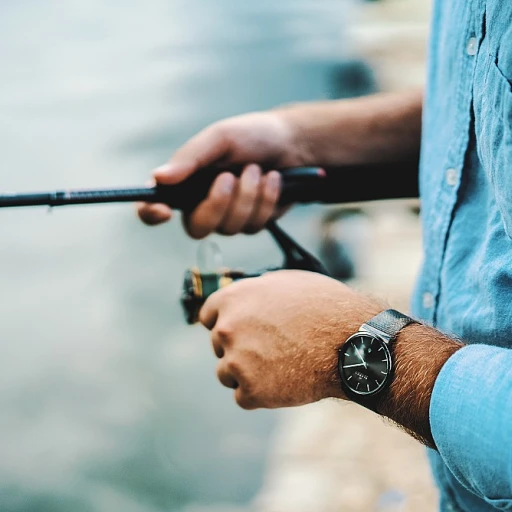
-large-teaser.webp)
